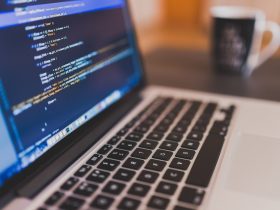When it comes to IT learning in schools, there’s arguably no device or technology more important in the classroom today than Raspberry Pi. The microcomputer is currently used in 45% of English schools, with 92% of educators and volunteers involved with the programmes attesting to how the hardware has helped children enhance their programming skills.
As Raspberry Pi is increasingly integrated into schools, students and teachers alike are becoming more accustomed with the technology and the possibilities within it. With more accessible projects available than ever before, just how much of an impact is raspberry Pi having on our children’s education?
Getting teachers on board
One of the best features of Raspberry Pi use in classrooms is the collaborative learning element it encourages between students. Before that becomes a possibility, however, teachers and the establishments behind them must be ready to embrace the possibilities of the technology, too.
If, as a teacher, you are new to all things Raspberry Pi, there are a few key steps to successfully incorporating it into your curriculum. Choosing the right Raspberry Pi for your class, your resources and your planned projects is a key starting block, as, of course, is getting your head around basic programming yourself.
Opensource.com offers a great step-by-step guide to getting Raspberry Pi in your classroom, which can help you tailor the hardware to your particular needs. Raspberry Pi themselves also offer a number of free training courses for teachers and educators to get to grips with.
Projects every classroom can realise
A huge part of Raspberry Pi’s success lies in its versatility. The project possibilities are humungous, allowing teachers to create tailored projects for their class as per their needs. While it’d be far too big of a job to explain everything the microcomputer can offer, there are a few standout projects that epitomise just how useful the board can be:
- Building a robot: this hugely broad, even unlimited project within the Raspberry Pi family is one of the hardware’s highlight capabilities. From smart cars to robots based on Lego, robot building is a hugely engaging project for all sorts of classroom environments.
- Creating a weather station: weather station projects with Raspberry Pi are long and engrossing in nature, and look to incorporate a few learning elements you’d expect to see at the key stage level.
- Smart mirror: the smart mirror is one of Raspberry Pi’s best-known projects. The project creates a mirror that embeds a displayed time alongside any other information the user desires – and is a hugely popular starter project with kids.
- Coding: perhaps a more forward-thinking project, there are a number of ways to learn to code with Raspberry Pi. Projects can use programs such as Scratch and Python, and students can even learn programming skills via Minecraft mods – an unquestioned favourite among the masses.
The beauty of Raspberry Pi in the classroom is that it can be essentially anything you want it to. This makes it a much more palatable choice for schools and teachers uninitiated with the technology, as the microcomputer’s versatility allows newcomers to get to know it quickly and easily.
With the technology on the verge of hitting half of the UK’s classrooms already, the big question is: when will you get on board?








Leave a Reply